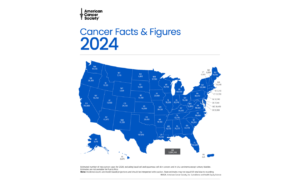As per the report published by The Brainy Insights, the global liver fibrosis market is expected to grow from USD 17.25 billion in 2021 to USD 43.98 billion by 2030, at a CAGR of 10.96% during the forecast period 2022-2030. North American region emerged as the largest market for the global liver fibrosis market, with a 43.56% share of the market revenue in 2021. The rise in the prevalence of liver diseases and healthcare expenditure propels the market’s growth in this region. Further, the regulatory approval of advanced technologies that can be incorporated with imaging systems is helping to drive market growth in this region. In addition, the Asia Pacific region is expected to show the fastest CAGR growth over the projection period due to rising government initiatives.
𝑹𝒆𝒒𝒖𝒆𝒔𝒕 𝒇𝒐𝒓 𝒂 𝑷𝒓𝒆𝒎𝒊𝒖𝒎 𝑺𝒂𝒎𝒑𝒍𝒆 𝑹𝒆𝒑𝒐𝒓𝒕
Leading companies in the industry include Mylan N.V., F. Hoffmann-La Roche Ltd., Johnson & Johnson Private Limited, Sanofi, Teva Pharmaceutical Industries Ltd., Pfizer Inc., Novartis AG, GlaxoSmithKline plc, Merck & Co., Inc., Dicerna Pharmaceuticals, Inc., Bristol-Myers Squibb Company, Gilead Sciences, Inc., Dynavax Technologies, Pharmaxis Ltd, AstraZeneca, Vertex Pharmaceuticals Incorporated, Sun Pharmaceutical Industries Ltd., FibroGen, Inc. and among others which are offering greater opportunities and are continuously focused on new product developments and venture capital investments to obtain market share.
The treatment segment of liver fibrosis market is divided into hepatotropic drug, ACE inhibitors, peroxisome proliferator-activated receptors (PPAR)-alpha agonist, and others. The hepatotropic drug segment led the market with a market share of 29.16% in 2021. This growth is attributed to the increasing number of injection drug users. The condition segment is divided into hepatitis C, chronic liver diseases, and nonalcoholic steatohepatitis. The hepatitis C segment led the market with a market share of 41.12% in 2021. This growth is attributed to the increasing prevalence of various infectious diseases, especially hepatitis C, along with medical technology advancements. The diagnosis segment is divided into nonsurgical tests, liver biopsy, transient elastography, and others. The liver biopsy segment led the market with a market share of 31.02% in 2021. This growth is attributed to the increasing number of biopsy procedures. The distribution channel segment of liver fibrosis market is divided into retail pharmacy, hospital pharmacy, online pharmacy, and others. The hospital pharmacy segment led the market with a market share of 32.05% in 2021. This growth is attributed to the increasing healthcare expenses throughout developing countries. The end-user segment is divided into specialty clinics, hospitals, home care, and others. The hospital segment led the market with a market share of 28.34% in 2021. This growth is attributed to the increasing quality of hospital services.
The increasing spending on research and development of novel therapeutics and changing lifestyle patterns propel the liver fibrosis market’s growth. Further, the rising geriatric population and awareness about regular check-ups are helping to stimulate the growth of the liver fibrosis market. In addition, a high level of awareness, a rise in the prevalence of liver diseases, and improving health care infrastructure are also boosting market growth.

































